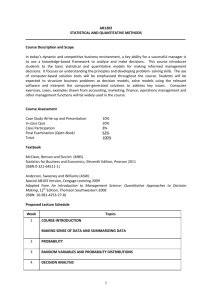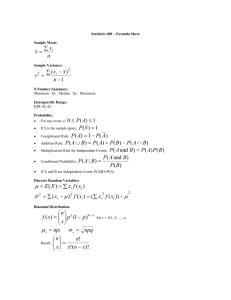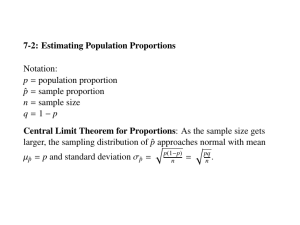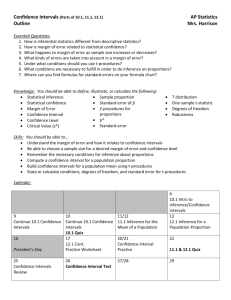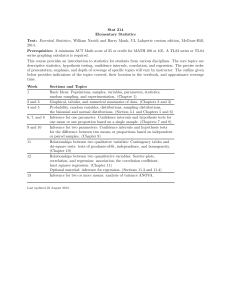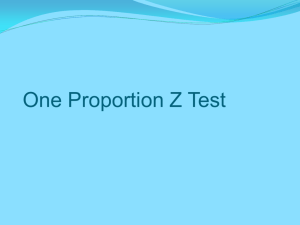Definitions and Listing the Conditions for Inference
advertisement
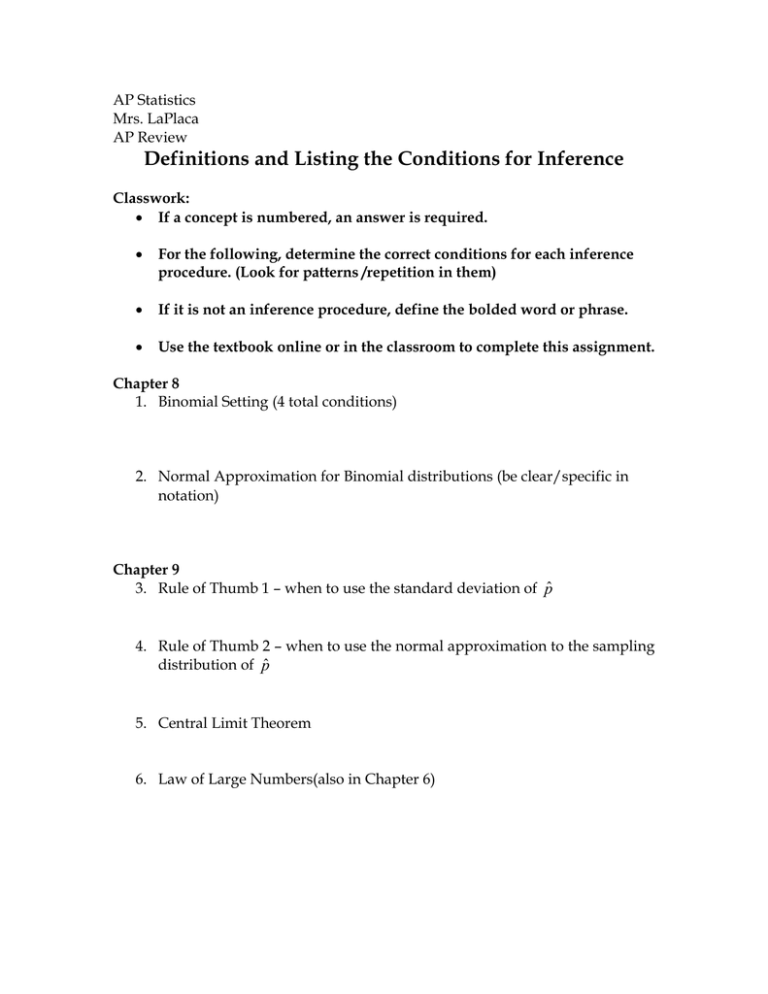
AP Statistics Mrs. LaPlaca AP Review Definitions and Listing the Conditions for Inference Classwork: If a concept is numbered, an answer is required. For the following, determine the correct conditions for each inference procedure. (Look for patterns /repetition in them) If it is not an inference procedure, define the bolded word or phrase. Use the textbook online or in the classroom to complete this assignment. Chapter 8 1. Binomial Setting (4 total conditions) 2. Normal Approximation for Binomial distributions (be clear/specific in notation) Chapter 9 3. Rule of Thumb 1 – when to use the standard deviation of p̂ 4. Rule of Thumb 2 – when to use the normal approximation to the sampling distribution of p̂ 5. Central Limit Theorem 6. Law of Large Numbers(also in Chapter 6) Chapter 10 7. Inference Toolbox – Confidence Intervals To estimate a population parameter Step 1: Step 2: Step 3: Step 4: 8. Inference Toolbox – Significance Tests (Hypothesis Tests) List expectations required in each step (see my notes for help) To test a claim about an unknown population parameter: Step 1: Step 2: Step 3: Step 4: One sample z – statistic - m is an unknown parameter. Conditions: 9. One sample z - Confidence Intervals for a Population Mean 10. One sample z - test for a Population Mean Chapter 11 One sample t – statistic - Both m and s are unknown parameters. Conditions: 11. One sample t - Confidence Intervals for a Population Mean 12. One sample t – test for a Population Mean Matched Pairs => Paired t – test (use the differences of the observed data) 13. One sample t – test for a Population Mean Comparing Two Population Means Goal is to compare the responses to two treatments or to compare the characteristics of two populations. Two sample t – statistic - All m1, m2 , s 1, and s 2 are unknown parameters. Conditions: 13. Two sample t - Confidence Intervals difference of Two Means 14. Two sample t – test for Comparing Two Means Chapter 12 Inference for a Population Proportion Proportion p is the unknown parameter. Conditions: 15. One sample – Proportion Confidence Interval for a Population Proportion Conditions: 16. One sample – Proportion z - test for a Population Proportion Inference for Comparing Two Population Proportions Compare two populations or the responses to two treatments based on two independent samples. Both p1 and p2 are unknown parameters Conditions: 17. 2 – sample Proportion Confidence Interval for the Difference of Two Proportion 18. 2 – sample Proportion z - Test for Comparing Two Proportion Chapter 13 Chi – Square Test Statistic Depending on the type of test this statistic can: Examine the distribution of proportions in a single population Compare two or more population proportions Determine if the distribution of one variable has been influenced by another variable. Conditions: 19. Chi – Square Test for Goodness of Fit 20. Chi – Square Test for Homogeneity of Populations 21. Chi – Square Test of Association/Independence Chapter 14 Inference for Regression b ± t * SEb Confidence Interval for Regression Slope Confidence Interval for the mean of the response “ m y ” Prediction Interval for an individual response “y”. Linear Regression t - Test for Regression Slope: H 0 : b = 0 Conditions: 22. Conditions for Regression Inference To check these conditions make and interpret the following graphs: Scatterplot Residual plot Histogram/stemplot (of the residuals) Three ways to Check or Address Normality (for Conditions) 23. 24. 25. 26. What conditions continually appear in the inference procedures? 27. Look at the Quantitative Significance Tests. What are the common conditions? Is there a test that has very different conditions than the others? 28. Look at the Categorical Tests. What are the common conditions? Is/Are there test(s) that have very different conditions than the others? Chapter 5 Define all bolded words in the chapter. Below are some suggestions (not all) of topics to define. o Define the different ways a sample can be bias o Define sampling types (SRS, matched pairs, etc.) o Define blocking. What is the purpose. o Define double-blind.
